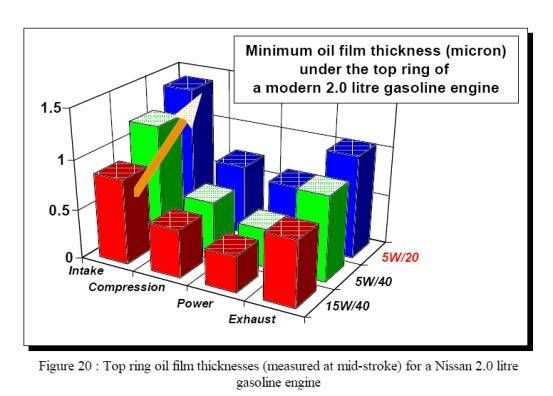http://www.carcraft.com/techarticles/oil_tech
Quote:
Another reason to perhaps shorten drain intervals for performance engines is that oil is an important component of ring seal. If engine oil is contaminated with water, the water evaporates almost immediately around the rings, reducing ring seal and horsepower. Several years ago, we witnessed this firsthand at the U.S. Nationals when John Lingenfelter's small-block-Chevy-powered Pro Stock truck suffered an internal water leak. Once the water mixed with the engine oil, the 9,000-rpm engine lost double-digit power, which cost him the race.
The ultimate seal with piston rings is assisted with engine oil. The highest friction loss in an engine is found between the rings and the cylinder wall. Quaker State's research indicates that a too-thin oil can actually vaporize at the top ring, sacrificing ring seal.
Fuel is another contaminant that is often found in engine oil. Fuel can enter the oil from several places, most commonly as blowby past the rings. Even though we think of fuel as easily evaporated, according to Farner only the light ends of fuel evaporate at room temperatures. The heavier ends require temperatures as high as 450 degrees F to fully evaporate, which means that even at 300-degree oil temperatures, there can still be residual fuel that tends to reduce your oil's effective performance.
Quote:
For street engines that do not suffer this kind of track-day abuse, merely pouring in a synthetic does not mean that you can radically extend service drain intervals. Petroleum-based oils do not lose their base lubrication characteristics, what does suffer with use are the additive packages added to the oil. Synthetics are no different. For example, Farner says that for every pound of fuel burned in an engine, the combustion process also creates a pound of water. Some of this water will eventually end up in the oil pan. If the engine rarely sees sump temperatures that exceed 212 degrees F (water's boiling point), the water quickly mixes with another combustion byproduct--sulfur--to create acids that can eventually eat bearings if the oil is not drained.






